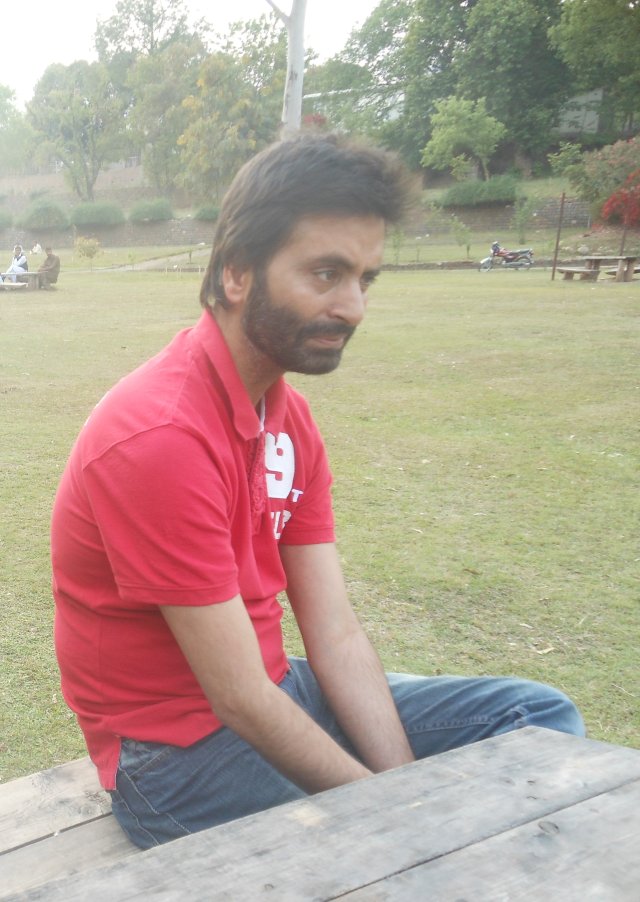
Yasin Malik is the chairperson of the Jammu Kashmir Liberation Front, a secular nationalist organisation formed in 1977 to struggle for the independence of Kashmir.
Since 1947, Kashmir has been divided between Indian and Pakistani occupied areas. Both claim the whole of Kashmir and have fought three wars over the country.
The JKLF launched an armed struggle in 1988, but changed tactics to non-violent struggle in 1994.
Malik, who is based in Srinigar in Indian-occupied Kashmir, has visible physical disabilities as a result of torture he suffered in Indian jails.
Indian and Western propaganda has conflated the JKLF with Pakistani-backed Islamist groups, but a Pakistani-American businessperson at the centre of a political scandal in Pakistan, Mansoor Ijaz, has alleged Malik has links to Indian intelligence.
Malik refuted the allegations before the Pakistani judicial commission into the scandal in Islamabad, where he spoke to Green Left Weekly’s Tony Iltis on April 25.
* * *
What is Kashmir fighting for and why does JPLF wants independence from both India and Pakistan?
We are not demanding a new thing. Kashmir was an independent, sovereign state before the birth of Pakistan and the independence of India. Kashmir has a very strong 5000-year-old civilisation.
In 1947, there was a movement on the Indian subcontinent for the liberation of the subcontinent. In Kashmir, there was a movement against the Maharajah. The people of Kashmir were demanding sovereignty for the people.
In 1947, Pakistan came into existence and India gained its freedom. But unfortunately Kashmir got divided with one part in Pakistan and one part in India.
The Maharajah of Kashmir signed a paper of accession with India. But in the correspondence with the Indian head of state, it was Lord Mountbatten who said it is a temporary issue that will be rectified by the people and that law and order will be restored when Kashmir is given the choice to freely decide its future.
But, unfortunately, until now that promise has never been kept. Now that the people are demanding the fulfillment of same promise that was made by Indian leaders and the Indian parliament, they are killing Kashmiris and putting them behind bars. It is the most militarised zone in the world right now.
Are abuses by Indian occupation forces continuing?
They are still continuing. From 2008 to 2010, the Kashmiri people have made a transition from armed struggle to a non-violent, democratic movement. We were expecting that the Indian government would show some kind of respect for this transition, but when millions of people were on the streets in a peaceful manner again they used military force.
In 2008 they killed 72, 42 in 2009 and in 2010 they killed 22 people. Young, small boys are behind bars. They do not spare kids, they put them in jail.
Why did the JKLF adopted the tactic of armed struggle but then changed tactics to non-violent political struggle?
Basically, the Kashmiri people have no history of violence over 5000 years. But in 1988, it was unfortunate that the same state that had produced a person such as Gandhi, who had given the whole world his concept of non-violent movements, did not allow any space for a non-violent movement.
We were forced to start our armed struggle in 1988 … which brought us close to revolution in 1990. Again, they used military force ― more than 100,000 people were killed.
In 1994, we decided again to go for a non-violent, democratic movement because India was telling everyone everywhere that it was Pakistani-sponsored terrorism, it is not a people’s movement. But in ’94, it was a most unpopular decision at that time [in Kashmir], but we were able to show that it is a people’s movement, not a sponsored movement.
What is the role of religion and religious political groups in Kashmir?
In every society, there are different schools of thought. India is a most diverse nation, with thousands of nationalities and thousands of political views. It’s the same in Kashmir: you will find different political outlooks.
But if you go through the pages of the history of Kashmir, Kashmiri people by temperament believe in coexistence and religious harmony.
Kashmiris believe in what is called the Sufi institution ― that is a spiritual institution. You will be surprised to know that the Kashmiri Sufi saints have a message and poetry that is completely for coexistence and both Hindus and Muslims respect them spiritually.
In 1947, when the whole subcontinent was at war, millions were killed ― even in Jammu thousands and thousands of Muslims were massacred ― but nothing happened in Kashmir. This was acknowledged by Gandhi, who said: “I have seen a ray of hope for humanity, I have seen it on the soil of Kashmir.”
Kashmiri people by temperament believe in coexistence. But yes, there are politicised and radicalised faiths. Everybody has a right to preach but Kashmiris believe in coexistence.
Have outside agencies promoted the extremist elements?
I will not say who is promoting or not promoting them. Ultimately, it is up to the people and I told you of the temperament of the Kashmiri people. Their temperament is the same as what it was in 1947 or 100 or 200 years ago.

Comments
Anonymous replied on Permalink